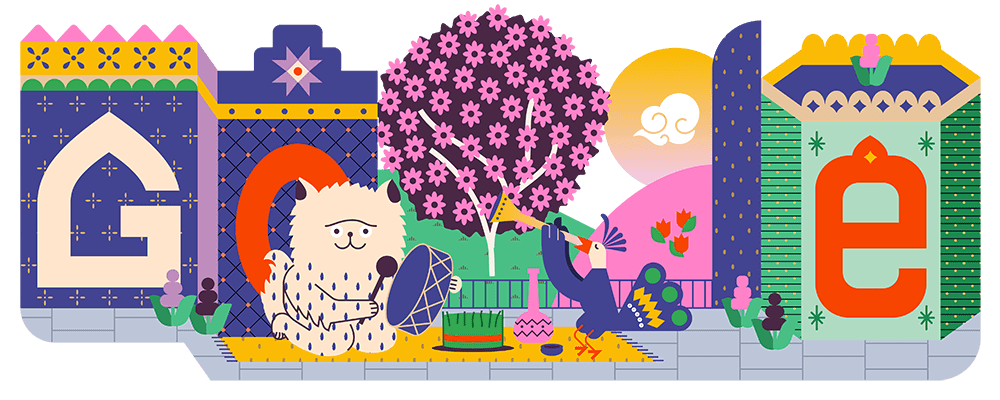In commemoration of Nowruz, the Persian New Year, Google’s homepage featured a colourful and animated Doodle on March 19, 2024. The ancient Persian holiday of Nowruz, which translates to “new day” in Persian, is observed on the vernal equinox, which heralds the arrival of spring.
Earth’s axis is neither inclined towards nor away from the sun during the spring equinox. At every latitude, there are almost equal amounts of daylight and darkness due to the earth’s symmetrical position. In addition, it heralds the arrival of spring, a season of natural rebirth and renewal in the Northern Hemisphere.
Read More
Persian culture was reflected in the Doodle’s elaborate design, which featured traditional calligraphy, vibrant flower patterns, and iconic objects like the Haft-sin table. The seven objects on this table, which begin with the Persian letter “sin,” stand for ideas like prosperity, well-being, and rebirth.
The history of Persian New Year Nowruz
With its origins in ancient Persia (modern-day Iran), Nowruz has been observed for around 3,000 years. Eventually, it spread to neighbouring nations like Afghanistan, Azerbaijan, and Turkey. It is acknowledged by UNESCO as an intangible cultural heritage of humanity and has its roots in the rich cultural legacy of the Iranian plateau.
This day is marked by a number of customs, such as giving away gifts, spending time with loved ones, organising springtime clutter, and indulging in regional specialties like fish and sabzi polo. Families decorate the table with symbolic objects like apples, garlic, sprouts, and vinegar as part of the Haft-sin ceremonial.
Beyond religious and cultural barriers, Nowruz is a festival of harmony, rebirth, and hope. Google’s Doodle is a wonderful reminder of the long history of this ancient event as the world welcomes the new year.
It eventually extended to neighbouring nations along the Silk Road trade networks. People of many different nationalities and religions celebrate it now throughout Central Asia, the Middle East, and even certain areas of the Balkans.
Share this content:

